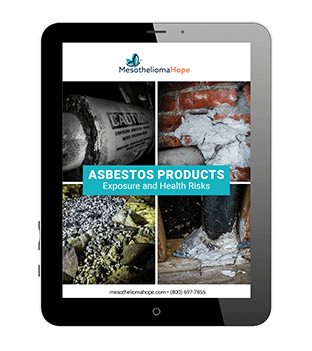A recent study published in The Journal of the American Medical Association (JAMA) discovered an alarming trend: a global mesothelioma increase. The study uncovered an increase in mesothelioma cases and deaths between 1990 and 2017. Based on these findings, governments and medical institutions across the world must advocate for a complete ban on asbestos use.
Global Mesothelioma Incidences Increased Over Past Two Decades
The recent study published in The Journal of the American Medical Association (JAMA) was performed to evaluate trends in mesothelioma cases across the world. Researchers in the study used existing data from the Global Burden of Disease’s 2017 database.
The analysis was conducted between May 23, 2019, and January 18, 2020. It involved mesothelioma patients from 195 countries and territories who were diagnosed between 1990 and 2017.
Highlights of the global study include:
- In 2017, there were 34,615 new cases of mesothelioma and 29,909 deaths.
- In 1990, there were 21,224 new cases of mesothelioma and 17,406 deaths.
- Over time, cases involving mesothelioma patients 70 years and older increased, while cases in patients 50 years and younger decreased.
- After 20 years of an asbestos ban, mesothelioma cases began to decrease.
Based on these findings, it is suggested that governments and healthcare organizations across the world develop strategies to prevent and manage mesothelioma cases.
Why Was There an Increase in Mesothelioma?
Asbestos exposure is the only known cause of mesothelioma. When asbestos fibers are inhaled, they travel through the body to the lungs, where they cause irritation and permanent scarring of healthy mesothelial cells.
After decades of cellular damage, cancerous cells begin to grow and divide, eventually forming mesothelioma tumors.
Since mesothelioma symptoms generally do not appear until 20 to 50 years after asbestos exposure, people who were unknowingly exposed as far back as the 1970s may still be at risk today.
Over 27 million people were exposed to asbestos at their jobs between 1940 and 1979, according to the Agency for Toxic Substances and Diseases Registry (ATSDR).
“Banning asbestos was associated with reductions in the increase of mesothelioma incidence and mortality; however, the association between mesothelioma and previous exposure to asbestos remains a concern.”
– The Journal of the American Medical Association
Those who served in the U.S. military or held jobs on certain worksites are at a higher risk of asbestos exposure.
Worksites with a high risk of asbestos exposure include:
- Automobile repair and assembly plants
- Chemical plants
- Coal and asbestos mines
- Construction sites
- Factories
- Insulation manufacturers and installers
- Plumbing
- Power plants
- Railroads
- Shipyards
- Steel mills
Over 30% of people diagnosed with mesothelioma are U.S. military veterans. Every branch of the military relied on asbestos for decades, not knowing it could cause mesothelioma and other deadly diseases. Family members may be exposed to asbestos indirectly if a loved one at risk for occupational asbestos exposure carried the fibers home on their clothes, skin, and hair.
While asbestos use was greatly restricted in the 1980s, it has not been completely banned, meaning there is still a risk of exposure to this very day. This unfortunate fact — coupled with the long delay between exposure and disease — may explain the global mesothelioma increase.
Mesothelioma Incidences in the Future
According to the National Cancer Institute (NCI), higher levels of asbestos exposure increase the risk of developing mesothelioma. However, there is no safe level of asbestos exposure.
The National Organization for Rare Disorders (NORD) warns that some people have developed mesothelioma after only one instance of asbestos exposure.
As the world continues to remove asbestos and advocate for a ban on asbestos-based products, mesothelioma cases are expected to decrease.
Unfortunately, until then, the global mesothelioma increase is expected to continue. According to a study performed in South Korea that was published by the National Institutes for Health (NIH), the mesothelioma incidence rate is estimated to increase from 2029 to 2033.
Therefore, it is critical to take measures geared toward reversing the trend of a global mesothelioma increase.
Efforts to prevent a future increase in mesothelioma cases and deaths include:
- Asbestos abatement: The sealing and removal of asbestos-based products
- Asbestos recycling: Converting asbestos into harmless glass
- Bans and other legislative measures: According to studies from countries that banned asbestos, mesothelioma cases decrease after a ban that lasts over 20 years
- Education on risks and dangers: Education is an essential part of reducing asbestos exposure
- Proper demolition and removal: Proper removal guidelines mandate that asbestos fibers being released into the air are minimized at all times
- Workplace safety: Anyone who works with or around asbestos must consistently follow:
- Workplace safety and health regulations
- Guidelines for the handling of asbestos materials
- Protocol for asbestos removal and management
Reversing the global mesothelioma increase is a major concern due to it being linked to asbestos exposure that occurred in the distant past. Because of this, healthcare professionals and innocent victims can not know the damage that is being done until it is far too late.
A full ban on asbestos will reduce mesothelioma cases and deaths. In the meantime, governments must focus on placing stricter controls around asbestos use.










